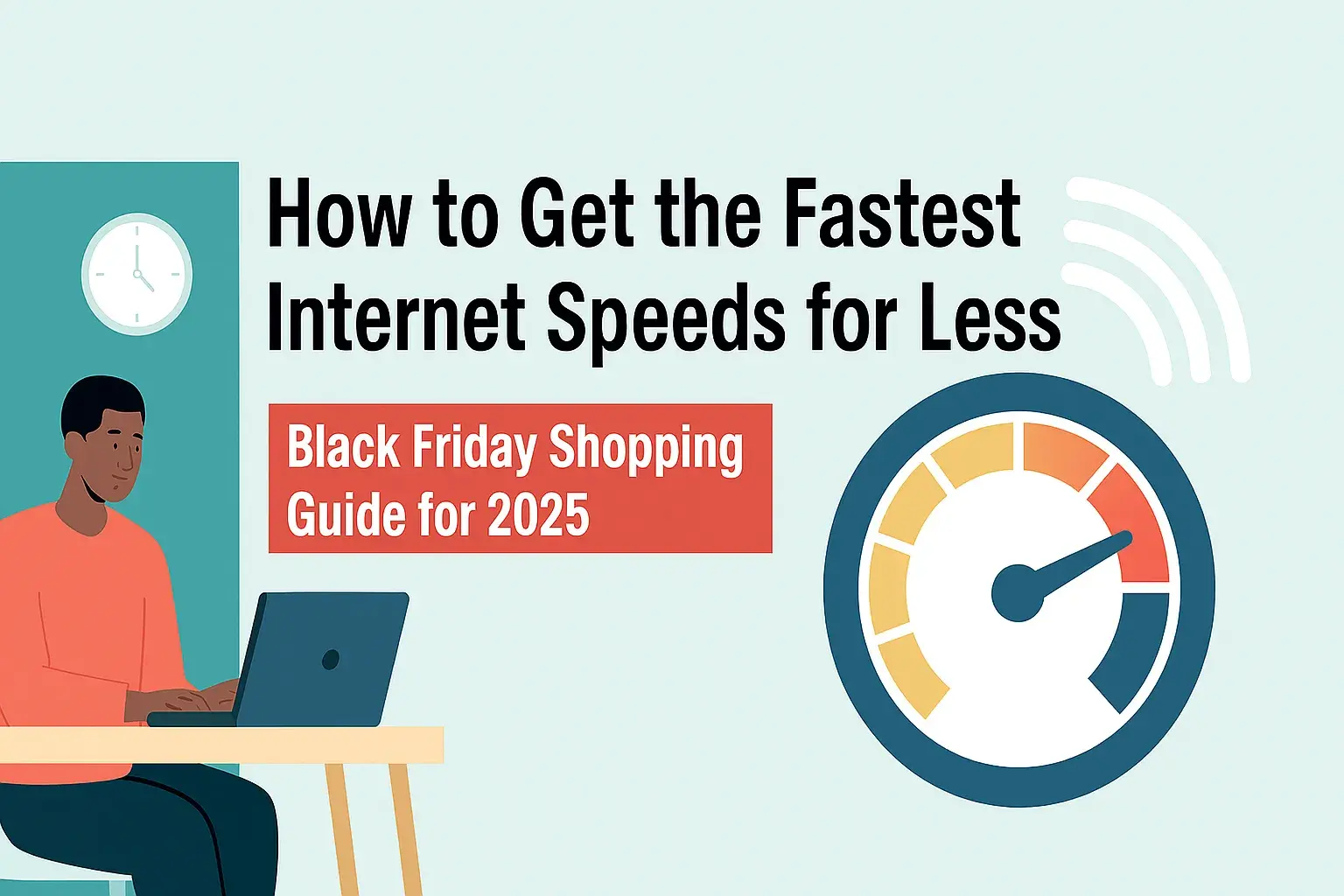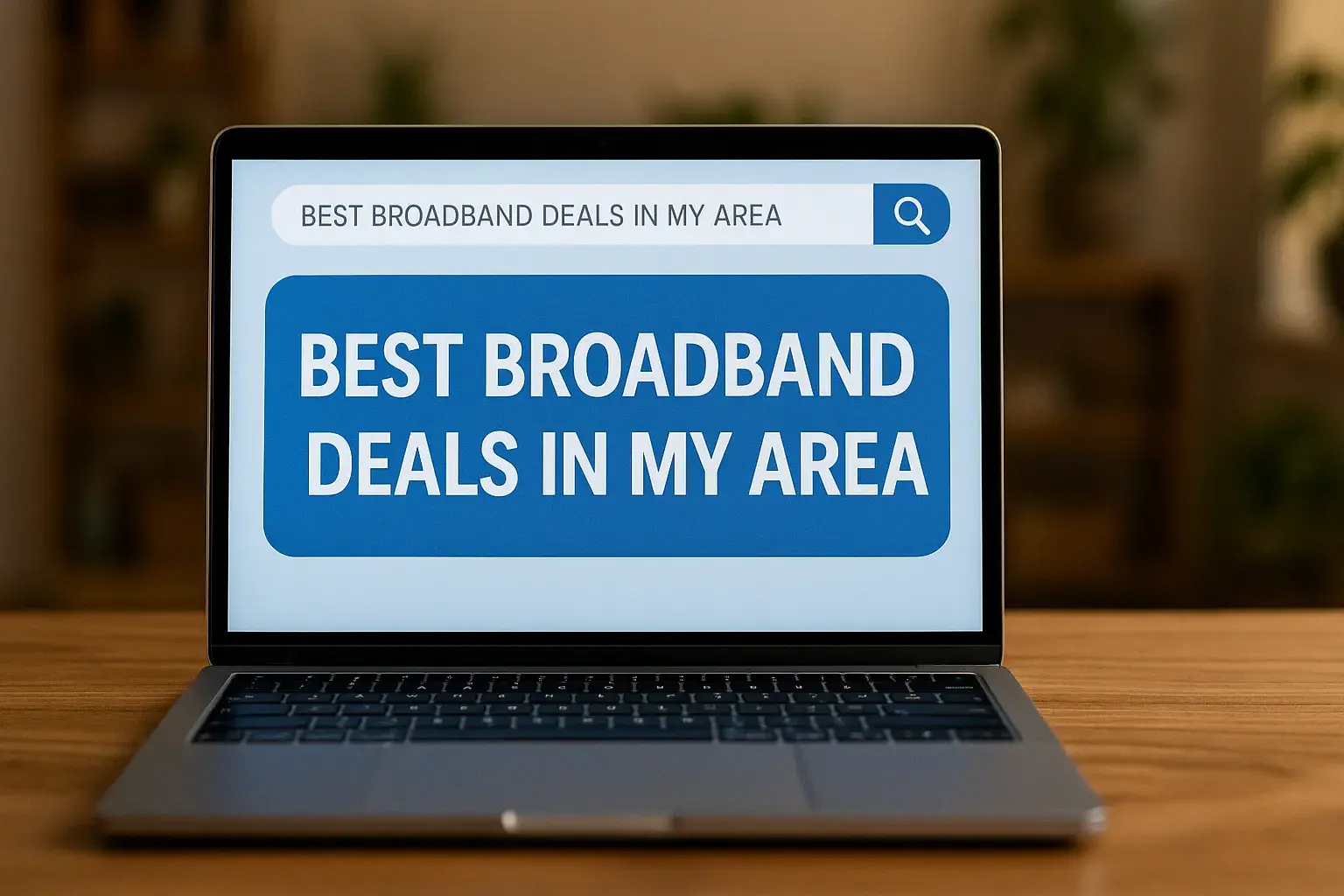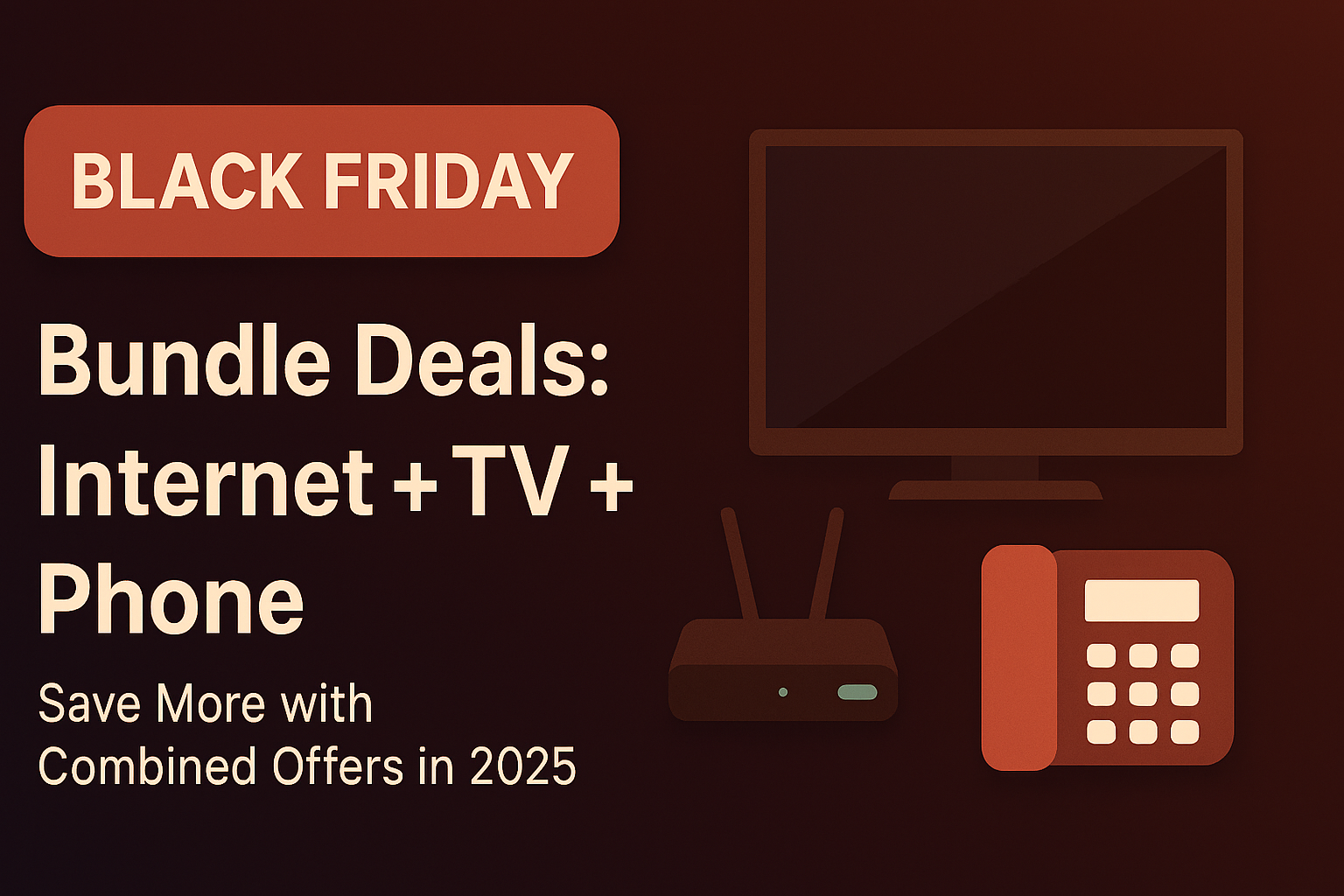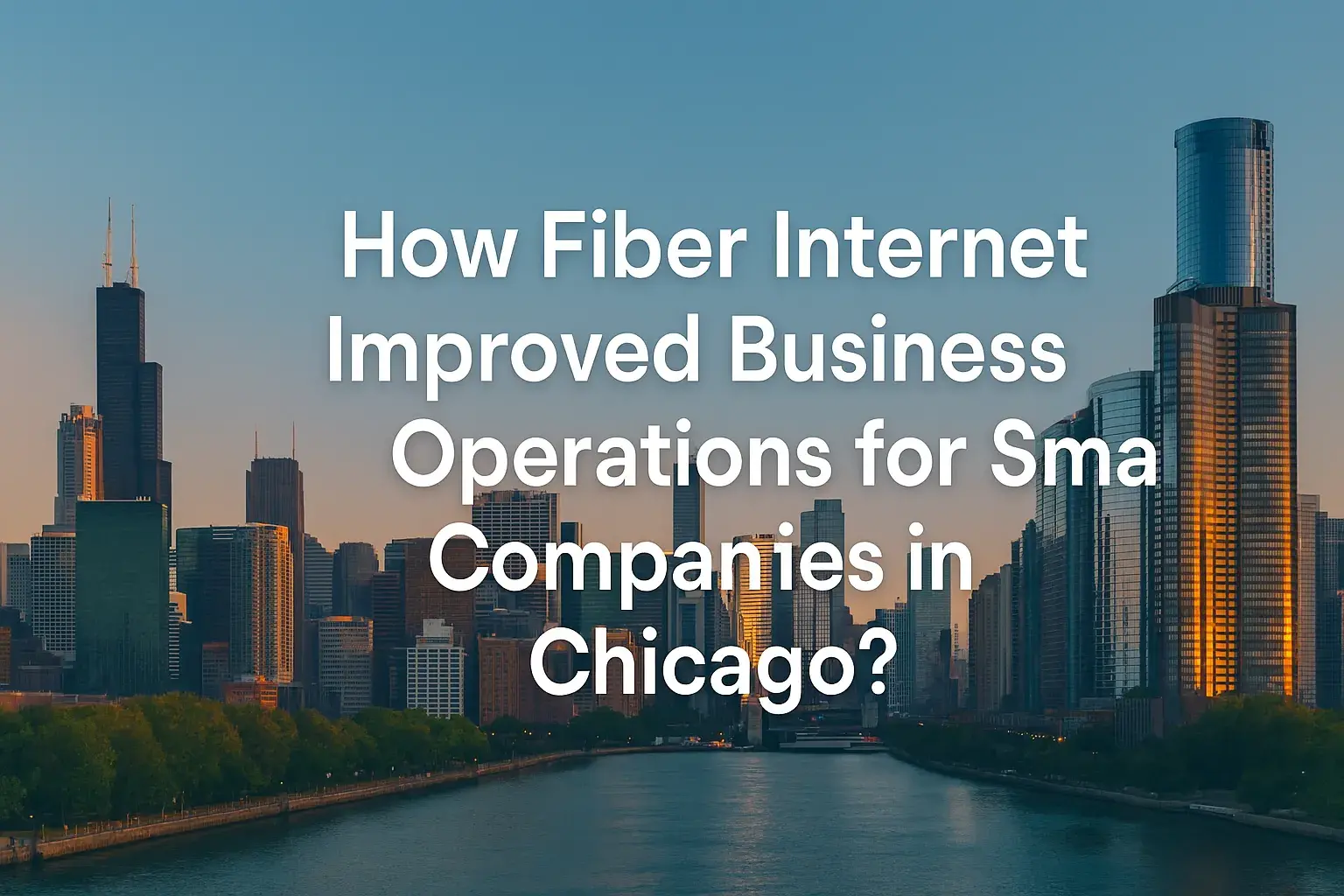How to Get the Fastest Internet Speeds for Less: Black Friday Shopping Guide for 2025

Black Friday 2025 is the absolute best time to score blazing-fast internet speeds without breaking the bank. This comprehensive guide gives you the expert playbook for finding, negotiating, and optimizing fiber and cable internet deals, ensuring you get gigabit performance or better for the lowest possible monthly price. Stop paying too much for slow service and lock in your high-speed connection now.
Table of Contents
The Black Friday 2025 ISP Landscape: Fiber, Cable, and 5G
The race for the fastest residential internet is hotter than ever in 2025, driven primarily by massive investments in Full Fiber (FTTP) and the rollout of 5G Fixed Wireless Access (FWA). Black Friday is where these competitors clash, offering unprecedented deals to capture new market share.
Fiber-Optic Internet: The Gold Standard
Fiber internet remains the undisputed champion for speed and reliability. It transmits data using light signals over glass strands, offering symmetrical speeds (upload speed matches download speed) and incredibly low latency. As of 2025, fiber availability has surged, moving beyond major metros into many suburban areas. The average cost for a 1 Gbps (gigabit) fiber plan has stabilized, making Black Friday discounts even more impactful.
2025 Data Point: Countries with robust fiber infrastructure, like Romania and South Korea, demonstrate that gigabit-speed internet can be incredibly affordable, often costing less than $0.05 per Mbps, far below the global average. This price pressure is fueling competitive U.S. and U.K. Black Friday deals.
Cable Internet: Speed, But with a Catch
Cable internet, typically delivered via coaxial cable (DOCSIS 3.1 or the newer DOCSIS 4.0), still provides multi-hundred Mbps speeds and, in some areas, asymmetrical gigabit service. The key difference is the asymmetry—you get fast downloads, but significantly slower uploads. For households with heavy uploads (remote work, video conferencing, cloud backups, live streaming), this can be a bottleneck. Black Friday cable deals often focus on bundles with TV or mobile service to sweeten the pot.
5G Fixed Wireless Access (FWA): The New Challenger
5G FWA, offered by major mobile carriers, uses cellular networks to deliver internet to your home. In 2025, FWA speeds are competitive in many markets, often reaching 300-500 Mbps download. It’s an excellent, low-cost option with simple, no-contract terms, making it a powerful negotiating tool against traditional ISPs. Black Friday may see waived equipment fees or deeply discounted first few months of service for FWA.
The following table summarizes the 2025 broadband technology comparison:
Technology | Typical Max Speed (Download) | Upload Speed | Latency (ms) | 2025 Black Friday Focus |
|---|---|---|---|---|
Full Fiber (FTTP) | 2,000 Mbps+ | Symmetrical (Fast) | < 10 | Cash/Gift Card Incentives, Low Introductory Rates |
Cable (DOCSIS 4.0) | Up to 10,000 Mbps (Emerging) | Asymmetrical (Slower) | 15-30 | Bundle Discounts, Free Equipment Rental |
5G FWA | 300 - 1,000 Mbps | Varies (Generally Slower) | 20-50 | No Contract, Price Guarantees, Free Trial Periods |
Decoding Speed: How Much Internet Do You Really Need?
The first rule of saving money is to stop overpaying for speed you don’t use. ISPs love to push the “gigabit” plan, but for many, a lower, more affordable tier is more than sufficient. Understanding your usage is key to getting the fastest internet speeds for less.
The Usage Matrix: Matching Speed to Lifestyle
Speeds are measured in megabits per second (Mbps) or gigabits per second (Gbps, which is 1,000 Mbps). Focus on your peak usage—when everyone is home, streaming, gaming, and working simultaneously.
Tier 1: Essential & Budget (100 - 300 Mbps)
Best For: Small households (1-2 people), light streaming (HD, not 4K), web browsing, and email.
Ideal Activities: One 4K stream or several HD streams, light remote work, social media.
Savings Tip: Look for Black Friday deals on 300 Mbps fiber plans. If you live alone or with one other person, this is your sweet spot for low cost and high performance.
Tier 2: The Modern Household (400 - 600 Mbps)
Best For: Mid-sized families (3-4 people), multiple 4K streams, heavy remote work, and regular online gaming.
Ideal Activities: Simultaneous 4K streaming on two or more TVs, large file transfers, competitive online gaming.
Value Play: This tier often provides 80% of the gigabit experience at 50-60% of the price. Target Black Friday mid-tier plans for the best value per Mbps.
Tier 3: The Power User (900 Mbps - 2 Gbps+)
Best For: Large families (5+ people), 8K streaming, professional live streamers, cloud-based businesses, and households with dozens of smart devices.
Ideal Activities: Multiple simultaneous gigabit-level downloads, hosting a game server, heavy video production and upload.
Black Friday Target: This is where gigabit deals shine. Look for introductory rates dropping the price of a 1 Gbps plan below $60/month, a common 2025 Black Friday prediction.
The Upload Speed Trap: Why Fiber Wins for Work
If you work from home, the upload speed is just as critical as the download speed. Cable ISPs typically provide 5-50 Mbps upload speeds even on their gigabit download plans. Fiber, however, often offers symmetrical 500 Mbps or 1,000 Mbps upload. A poor upload speed leads to:
Choppy, low-resolution video calls (Zoom, Teams).
Slow cloud backups and large file synchronization.
Laggy live streaming or screen sharing.
Actionable Step: If your job depends on video conferencing or large uploads, filter your Black Friday search only for providers offering symmetrical or near-symmetrical speeds. This is usually only Fiber.
The Ultimate Black Friday Negotiation Playbook
The single most powerful tactic for getting the fastest internet speeds for less is aggressive negotiation. Black Friday is the perfect leverage point, as ISPs are desperate to hit end-of-year sales quotas.
Step-by-Step Guide to Black Friday Haggling
Step 1: Arm Yourself with Competitive Data (The Benchmark)
Before calling your current ISP, research two things:
Your current provider's Black Friday & New Customer deals: What are they offering to people who live right next door? New customers always get the best rates—you want that rate.
Rival ISP's best offers: Check fiber, cable, and 5G FWA competitors in your area. For example, if a 5G FWA provider is offering 400 Mbps for $50/month with no contract, that's your starting point for negotiation.
Step 2: Go Straight for Retention (The Holy Grail)
Call your current ISP's customer service line. Do not ask for a discount—tell them you want to cancel your service. This action triggers a transfer to the Customer Retention Department (sometimes called Disconnections), whose sole job is to keep you. They have the authority to offer deals far better than regular customer service agents.
Step 3: Master the "Magic Phrases"
Use confident, non-confrontational language that anchors your desired price to a competitor's offer. Do not accept the first offer, as it is almost never their best.
"I'm afraid $XX is simply too high. I've been offered the 500 Mbps fiber plan from [Rival ISP] for $YY/month, with a $150 gift card. Can you match or beat that offer on your 1 Gbps plan to keep my business?" (Always aim for an upgrade or better terms when matching a price.)
"I need to think about it." (This phrase, used after the first offer, signals you're ready to walk and often prompts the agent to sweeten the deal.)
"What is the absolute, very best Black Friday price you can offer for my loyalty?" (Forces them to give their most powerful available deal.)
Step 4: The Throw-Ins (Value-Add Negotiation)
If they refuse to lower the monthly bill further, negotiate for valuable add-ons that essentially lower your overall cost:
Waived installation or activation fees (typically $50-$100).
Free equipment rental (saving you $10-$15/month).
A complimentary speed upgrade (e.g., getting the 1 Gbps plan for the price of the 500 Mbps plan).
The Contract Conundrum: Lock-In vs. Flexibility
Black Friday deals are almost always tied to a 12- or 24-month contract. To get the cheapest monthly rate, you often have to agree to a lock-in. Weigh your options:
Contract (Lowest Price): Best if you are confident in the provider's service quality and don't plan to move for two years. Ensures the lowest monthly rate.
No Contract (Flexibility): Best if you are testing a new technology (like 5G FWA) or expect to move soon. The monthly price will be slightly higher, but you avoid early termination fees (ETFs).
Pro-Tip: Ask the Retention Agent what the Early Termination Fee (ETF) is and ensure you get that amount in writing. This is crucial for planning your exit strategy if service quality degrades.
The Hardware Advantage: Buying Your Way to Faster Speeds
Getting the fastest internet speed is only half the battle; the other half is ensuring your home network equipment can handle it. Black Friday 2025 is the prime season for upgrading to Wi-Fi 7 technology for peak performance.
Stop Renting, Start Saving: Buying Your Own Modem
ISP equipment rental fees typically range from $10 to $15 per month. Over a two-year contract, this adds up to $240-$360. Buying your own modem and router is one of the quickest ways to reduce your long-term internet cost.
Compatibility is Key: Ensure the modem you buy is certified for your ISP's network and supports their maximum speed tier (e.g., a DOCSIS 3.1 modem for gigabit cable internet). Fiber ISPs often require their own Optical Network Terminal (ONT), but you can almost always use your own router.
The Wi-Fi 7 Revolution: Maximize Your Gig
The latest standard, Wi-Fi 7 (802.11be), offers multi-gigabit speeds and incredibly low latency, a necessity for truly experiencing a gigabit-plus internet plan. Black Friday discounts on new routers are significant in 2025 as manufacturers push the new standard.
Top 2025 Router/Modem Combos for Black Friday
When shopping Black Friday deals, look for these features:
Multi-Gig Ports: At least one 2.5 Gigabit (2.5G) or 10 Gigabit (10G) Ethernet port to connect your modem to your router and a high-performance device (like a gaming PC).
Tri-Band or Quad-Band: Supports 2.4 GHz, 5 GHz, and the crucial 6 GHz band (for Wi-Fi 6E/7), which offers a wide, interference-free highway for data.
Mesh Capability: For homes over 2,000 square feet, a Wi-Fi Mesh system is essential to ensure fast speeds reach every corner.
The following table lists top-performing 2025 hardware to look for in Black Friday sales:
Category | 2025 Model to Target | Key Features | Black Friday Saving Potential |
|---|---|---|---|
Best Wi-Fi 7 Router | TP-Link Archer BE9700 | Tri-Band (2.4/5/6 GHz), 10 Gbps WAN/LAN port, Multi-Gigabit support | Typically $50-100 off MSRP |
Best Mesh System | Asus ZenWiFi BQ16 Pro | Wi-Fi 7, Quad-Band, Easy Setup, High coverage for large homes | Up to 30% off multi-pack bundles |
Best Cable Modem (Gigabit) | ARRIS SURFboard G54 | DOCSIS 3.1, Integrated Wi-Fi 7, multi-gig Ethernet ports | Free/Heavily Discounted with new service or $30-50 off retail |
The Importance of Ethernet: Bypassing Wi-Fi for Speed
Even the fastest Wi-Fi is slower and less reliable than a direct cable connection. For devices that demand the absolute fastest speed and lowest latency (gaming consoles, desktop PCs, smart TVs for 4K streaming), use an Ethernet cable. Cat6 or newer cables can easily handle 1 Gbps and 2.5 Gbps connections.
DIY Network Optimization: Free & Low-Cost Speed Boosts
You can often double your effective speed without changing your ISP or your plan. These do-it-yourself optimization steps eliminate common bottlenecks that choke even the fastest gigabit connections.
The Router Placement Strategy: Maximizing Signal
The single biggest factor in Wi-Fi speed, apart from your plan, is where your router is placed. Wi-Fi signals are degraded by distance, walls, and interference.
Central Location: Place the router as close to the center of your home as possible, minimizing the distance to all your devices.
Elevate It: Put the router on a high shelf or table. Signals tend to spread downward. Do not hide it in a cabinet, closet, or on the floor.
Avoid Interference: Keep it away from dense materials (brick, concrete walls, metal filing cabinets) and other electronics that use similar frequencies, such as microwaves, cordless phones, and older baby monitors.
Advanced Router Settings: Quality of Service (QoS)
If you have multiple people streaming and gaming simultaneously, you need to use your router's Quality of Service (QoS) settings. QoS allows you to prioritize traffic so that important applications always get the bandwidth they need.
Prioritize Gaming & Video Conferencing: Set rules to give your Xbox, PlayStation, or Zoom traffic the highest priority. This ensures your video call doesn't freeze because someone started a Netflix stream in 4K.
Limit Background Hogs: Deprioritize massive background tasks like cloud backups (iCloud, OneDrive) or operating system updates, which can consume significant bandwidth without warning. Schedule these for the middle of the night.
Channel Surfing: Reducing Wi-Fi Congestion
Imagine your Wi-Fi signal is a car on a highway. If everyone is on the same channel/lane, traffic slows down. Your router may be automatically selecting a congested channel. Use a Wi-Fi analyzer app on your phone or computer to identify the least-used 5 GHz or 6 GHz channel in your area. Then, manually set your router to that channel in the settings.
The 2.4 GHz vs. 5 GHz vs. 6 GHz Breakdown
2.4 GHz: Slower speed, but travels farther and penetrates walls better. Best for smart home devices and low-bandwidth tasks in distant rooms.
5 GHz: Faster speed, but shorter range. Best for streaming, gaming, and any device close to the router.
6 GHz (Wi-Fi 6E/7): Fastest speed, shortest range. Best for absolute performance on devices in the same room as the router, away from any interference.
Check Your Cables: A Simple, Critical Fix
Your Ethernet cables must be rated to handle gigabit speeds. Older cables (Cat5) will cap your speed at 100 Mbps, effectively wasting your gigabit plan. Upgrade all critical wired connections to Cat6 or Cat6a for guaranteed multi-gigabit performance.
Avoiding Black Friday Traps: The Fine Print Checklist
ISPs use Black Friday to lure customers with headline-grabbing prices. As an informed consumer, you must read the fine print to ensure that “fastest for less” doesn’t become “fastest for much more later.”
The Black Friday Fine Print Checklist
1. The Promotional Rate Expiration
Most Black Friday deals are introductory offers. Check:
Duration: Is the low price for 12 months, 24 months, or a shorter period?
The Post-Promotion Price: What does the bill jump to after the introductory period? A common trick is a 50% increase after 12 months. Factor this into your total 24-month cost to see the true value.
2. Equipment Rental Fees
Verify whether the Black Friday price includes the modem/router rental fee. If not, budget an extra $10-$15 per month. The best deals often include free equipment rental for the entire contract term.
3. Mandatory Bundle Requirements
Is the lowest internet price only available if you bundle it with a TV package or a mobile line? If you don't need the bundle, the effective cost of the internet may be higher than a standalone deal. Always ask for the internet-only price, even if you are haggling against a bundle offer.
4. Hidden Installation and Activation Fees
Installation fees for new fiber lines can be hundreds of dollars. The best Black Friday deals waive these. Confirm in writing that all upfront costs are zero or minimal.
5. Data Caps
While most major fiber and cable plans are now unlimited, some budget or older cable plans may still have data caps (e.g., 1 TB). Hitting a cap can result in severe throttling or massive overage fees. Confirm your plan is truly unlimited data before signing the contract.
Navigating Price Hikes in 2026 and Beyond
Even with a contract, ISPs often reserve the right to increase the price annually due to inflation. This can be 3-5% and is usually in the fine print. While this is unavoidable, a Black Friday deal with a low starting price minimizes the impact of these future hikes.
Expert Tip: Set a calendar reminder for 10-11 months after you sign your new contract. This is your cue to re-start the negotiation process (Step 3) before your introductory rate expires and the price jumps up.
Check for New Competitors: The Ultimate Leverage
The 2025 broadband map is constantly changing. A new local fiber provider or a new 5G FWA tower near your home offers immediate and superior leverage. Check for new fiber lines being laid in your neighborhood—they are often the most aggressive with Black Friday pricing to attract their first customers.
Conclusion: Your Fastest Internet for Less Strategy
Securing the fastest internet speeds for less this Black Friday 2025 is a three-pronged strategy: Deals, Negotiation, and Optimization. First, choose the right technology—fiber is the future, but a cheap 5G FWA plan is your most powerful negotiating weapon. Second, don't be afraid to haggle. Arm yourself with competitor pricing and use the word "cancel" to get transferred to the retention department, where the best discounts live. Third, invest wisely in your hardware—a Wi-Fi 7 router and eliminating rental fees are permanent ways to reduce your cost and maximize your speed. By following this guide, you will transition from overpaying for slow internet to enjoying a multi-gig experience at an introductory Black Friday rate, giving you superior value for the next two years and beyond.



